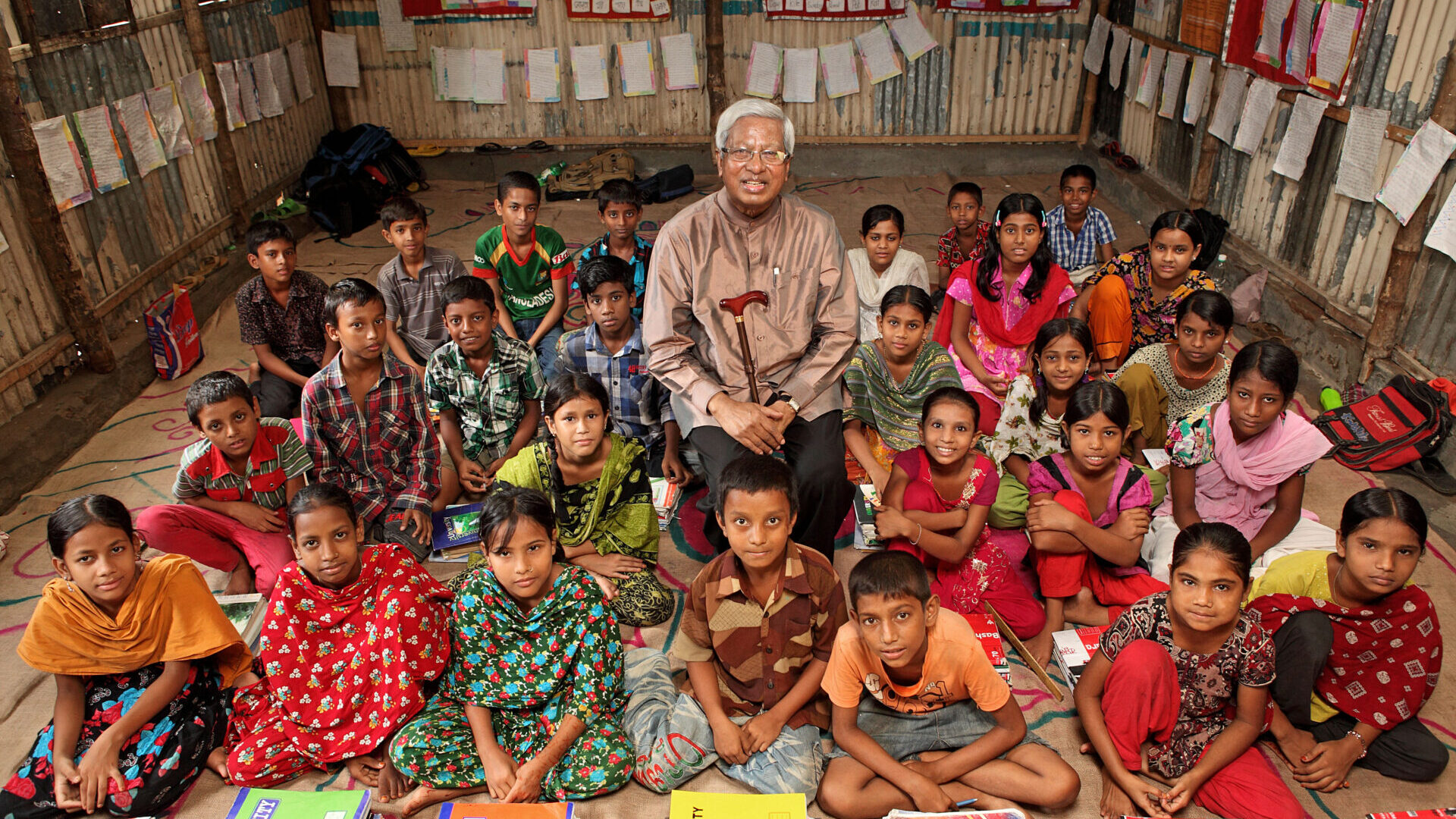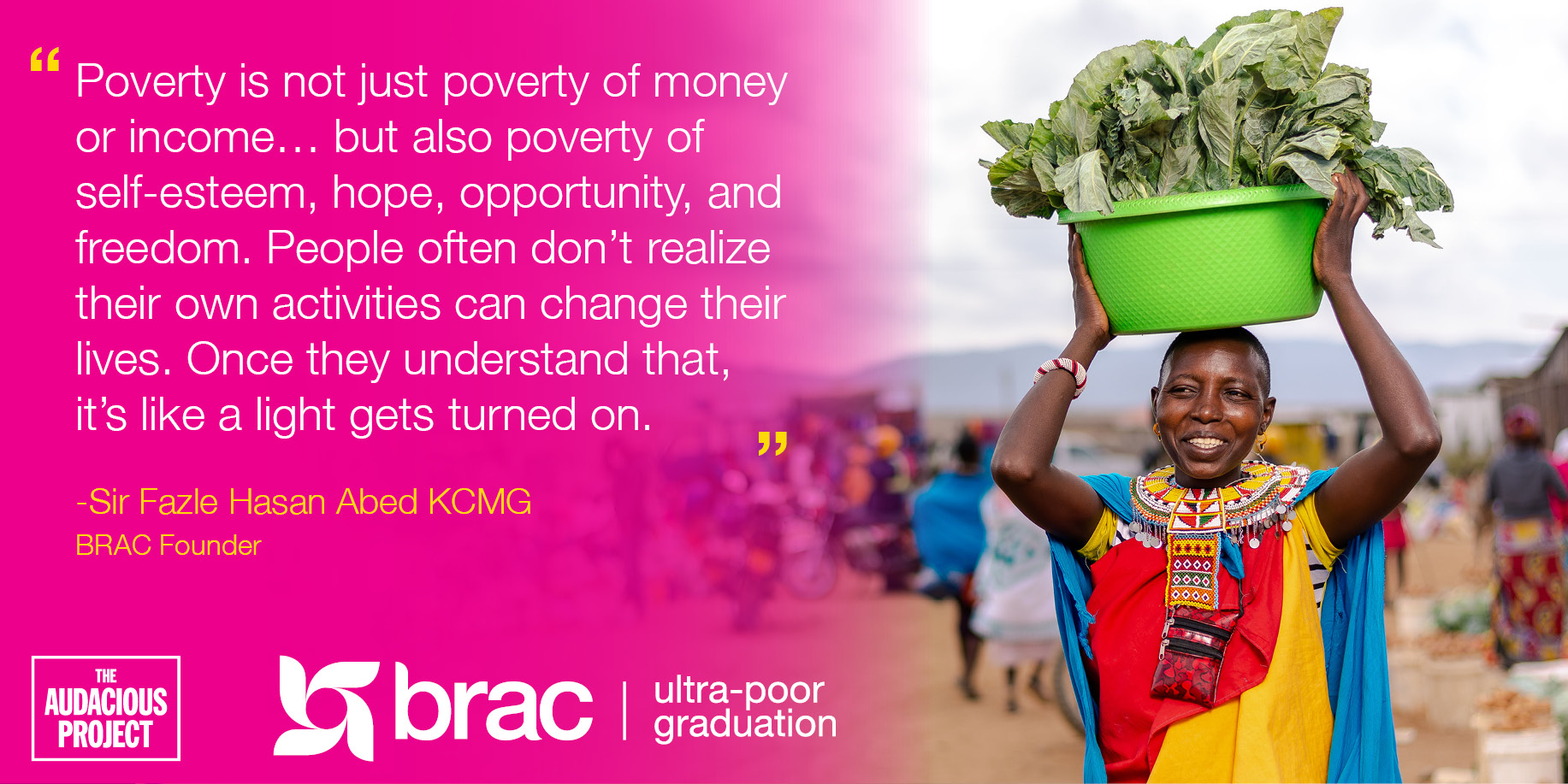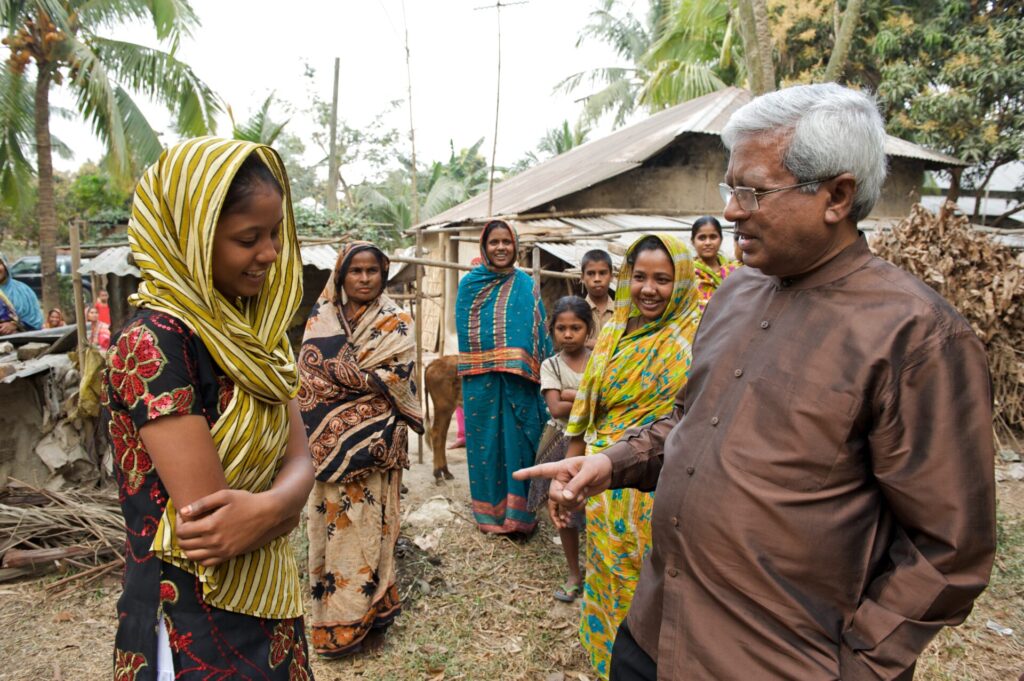https://bracupgi.org/news-updates/social-innovation/brac-50-anniversary-extreme-poverty/
50 Years of Combating Extreme Poverty, From Bangladesh to the World
March 17, 2022 • 8 minute read

By Isabel Whisson | Senior Manager, Strategy and Max Gollin | Deputy Manager of Communications, BRAC Ultra-Poor Graduation Initiative
This year, BRAC celebrates its 50th anniversary and the 20th anniversary of its flagship Graduation approach. In 1972, Sir Fazle Hasan Abed KCMG (affectionately known at BRAC as ‘Abed bhai’) started BRAC as a small relief program, in the aftermath of the devastating Bhola cyclone and Bangladesh’s hard-won war for independence. 30 years later, BRAC pioneered the first Graduation program. Fast forward to 2022 and BRAC has directly empowered more than 2.1 million households to escape extreme poverty in Bangladesh alone via the Graduation approach and directly implemented or advised on Graduation programs in 15 additional countries. Nearly 92 million people across 75 countries have been reached by 219 economic inclusion programs which share elements of BRAC’s Graduation approach.
Reflecting on this history, our approach to extreme poverty eradication has been guided by four critical principles which underpin BRAC’s past success and future ambitions.
Put the furthest behind first
From the first village Abed bhai and his passionate team of volunteers began working with in 1972, BRAC worked from a philosophy of harnessing the innate power, agency and dignity of people, in spite of the vulnerability of their situation. He quickly realized he had to start with the most deprived areas and reach the people in the deepest forms of poverty first. This was more than a duty to serve the most vulnerable. It was the understanding that people living in extreme poverty were being overlooked in spite of their potential to lift themselves from their circumstances if only given the tools and self-belief that others had, to realize their potential.
According to Abed bhai, BRAC sought to embody Paulo Freire’s philosophy that people should be the subject, not the object of development programs. This principle lives on in BRAC’s work with governments today whereby we are demonstrating the power and potential of populations in extreme poverty that have been left behind by traditional economic development policies and practices. People living in extreme poverty must not be considered passive recipients of aid but powerful potential agents of change and progress. This principle continues to drive BRAC’s direct implementation, technical assistance, and advocacy around the Graduation approach.
Extreme poverty is multidimensional and requires a multidimensional approach

BRAC recognized that enabling people to escape extreme poverty would require a holistic approach that includes both social and economic empowerment. In 2006, reflecting on BRAC’s Graduation program in Bangladesh, Abed bhai wrote that, ‘the constraints [people] face in escaping extreme poverty are interlocked in ways that are different from those who are moderately poor. This challenges us to rethink our existing development strategies and interventions for the extreme poor, and come up with better ones that work for them.’ This was the challenge that drove BRAC to initiate what was an experimental programme in 2002, with the idea being ‘to address the constraints that the extreme poor face in asset building, in improving their health, in educating their children, in getting their voices heard, in a comprehensive manner so that they too can aspire, plan, and inch their way out of poverty.’
Evaluate and re-evaluate methods and assumptions
To ensure its programs had lasting impact, BRAC committed itself to a culture of critical self-evaluation, built on humility, curiosity, and rigor. These values led to the uncomfortable realization in the late 1990s that our programs were failing to adequately reach and generate long-term impacts for a subset of households living in the most extreme states of poverty and marginalization, which BRAC dubbed ‘ultra-poverty’. Graduation emerged from BRAC’s findings that its Income Generation for Vulnerable Group Development (IGVGD) program with UN World Food Program (WFP) and the Government of Bangladesh was having positive impacts, but women in ultra-poverty were still unable to access loans by the end of the program and needed more intensive support.
BRAC developed the Graduation approach in response to this need, constantly asking how it could improve the program, and if the assumptions it operated under remained valid. This constant, careful fine-tuning of the program led to significant and sustained impacts captured in randomized controlled trials, and sparking a tide of Graduation adaptations around the world. Even so, sensing that the program was no longer sufficiently suited to the evolving poverty context of Bangladesh in 2016, the Ultra-Poor Graduation (UPG) program probed nearly every aspect of Graduation in a major redesign. For instance, upon realizing its asset transfers were no longer large or diverse enough in the current market, the UPG program doubled their value and expanded the livelihood options available to participants.
Such reevaluations of Graduation have ensured its continued relevance and impact. They would not have been possible without BRAC’s commitment to rigor and connection to the communities we serve. BRAC takes firsthand insights from the field staff and listens to local communities, combining this lived experience with rigorous research through internal evaluations, working with the BRAC Institute of Governance & Development (BIGD), and external research partnerships to ensure program quality.

Scale is paramount
The qualities listed above would have been sufficient to empower many people to improve their lives through Graduation. But Abed bhai’s vision, and the vision of his successors has always pushed BRAC to think of impact and scale as inseparable. As he often said, “Small is beautiful, but scale is necessary.” Impact at scale is an operating principle for BRAC.
A program is not sufficiently impactful because it can be effective for any one household, but because it has the potential to reach millions of households. This is what BRAC Ultra-Poor Graduation Initiative now aims to do as part of BRAC International’s efforts to bring an approach born in Bangladesh to the world for extreme poverty eradication. Programs we directly implement like UPG are BRAC’s soul and strength, where our experience, skills, and learnings come from, but we know BRAC – nor any other NGO – cannot achieve our vision for the world alone. Scale is only possible through ambition and collaboration.
By 2026, we aim to reach 4.6 million more households with the Graduation approach by scaling through government uptake with multisectoral partners. Sir Abed’s vision was for BRAC to reach a point where it was no longer needed. At the community level, this meant empowering people to continuously develop and improve their lives long after participating in a BRAC program. At a global scale, this means taking 20 years of experience with Graduation and passing that knowledge to governments, researchers, multilateral institutions, media, and civil society to continue expanding the approach.
With nearly 700 million people still living in extreme poverty globally, we face what may seem an insurmountable challenge. But by committing to the same values which have defined BRAC’s approach to extreme poverty reduction, the international community has the chance to deliver real, meaningful progress toward a world where the deepest forms of poverty are extinct.
“Poverty eradication may be a few years away, but it is possible,” said Shameran Abed, Executive Director of BRAC International, who oversees BRAC’s Graduation programs. “We should be the last generation on earth that sees extreme poverty. The resources are there. The research exists. It’s going to take some convincing of governments. It’s going to take some political will, which requires effective advocacy and technical assistance at the local level, but it can be done.”


No comments:
Post a Comment